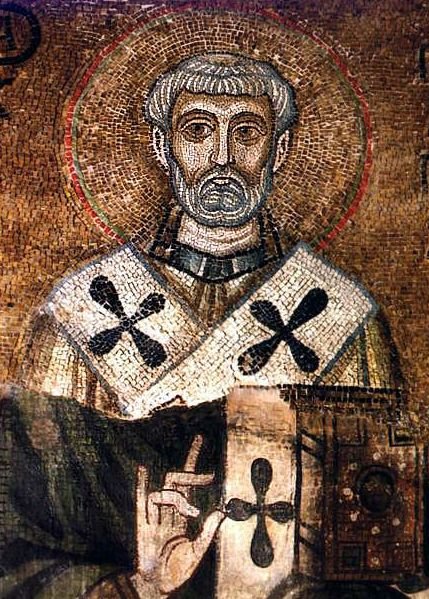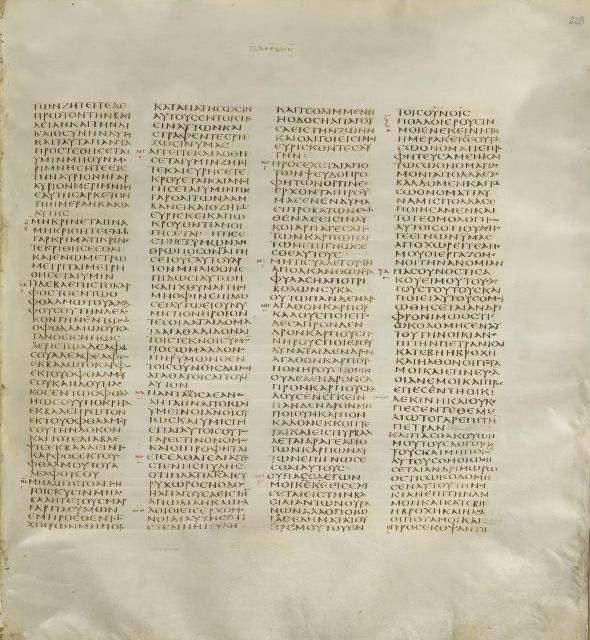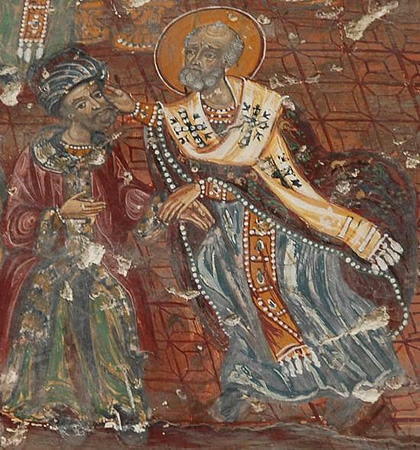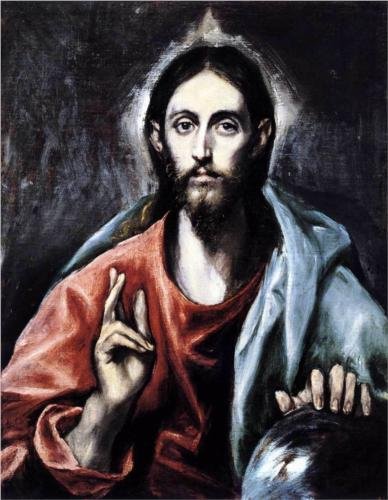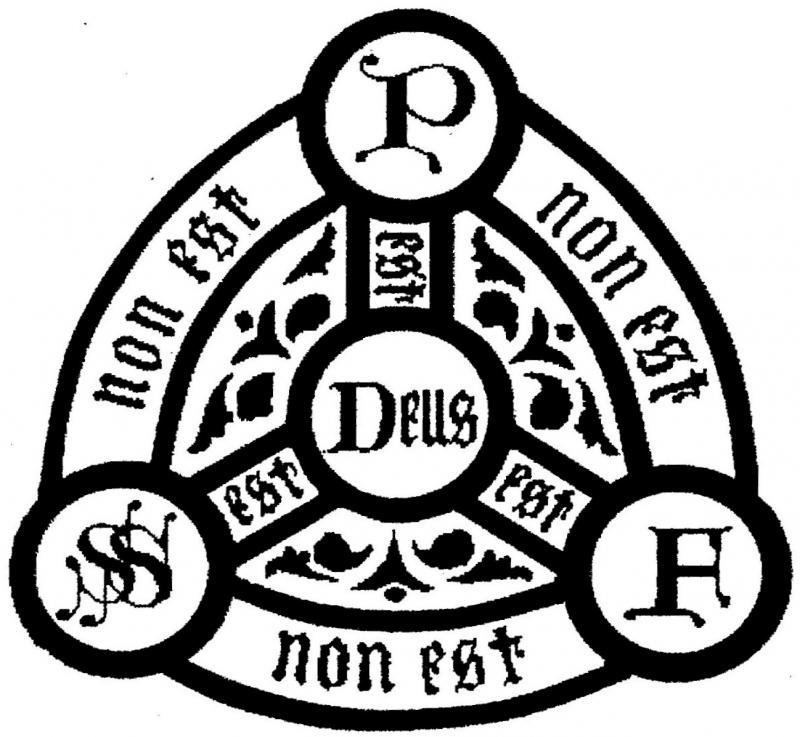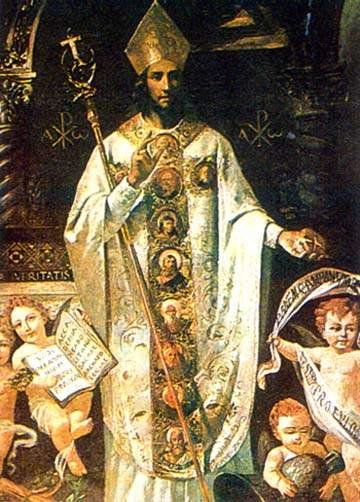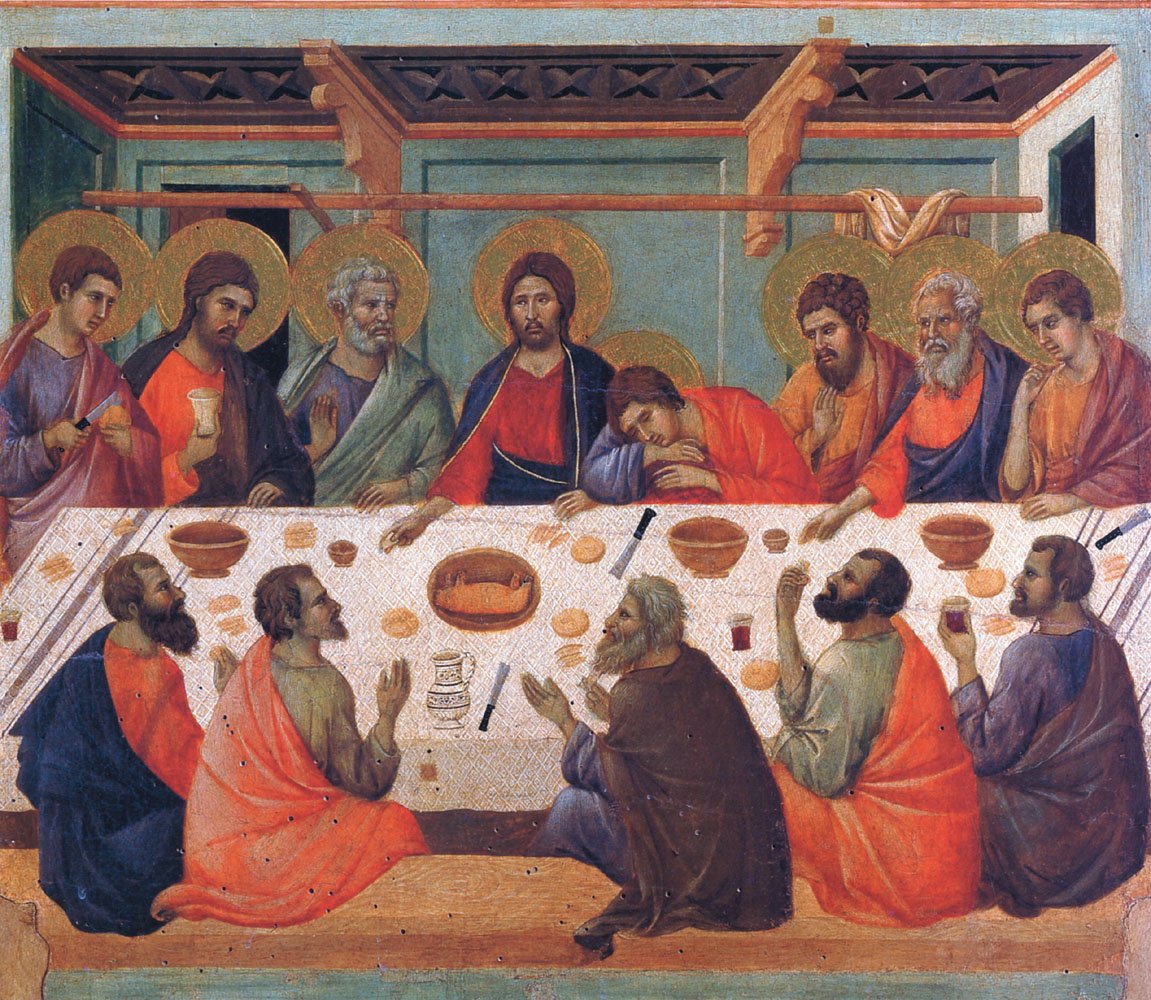
The Last Supper (c. 1311), by Duccio (WikiArt.org).
Recently I’ve been writing about assumptions and presumptions that Protestants make in reading the early history of the Church: particularly the presumption that if the Church they observe in early documents does not resemble their Protestant one, then it must have apostatized from the true, apostolic faith of Christ that they read in Scripture. Scripture speaks with enough generality that they can project their Protestant interpretation upon it; but the image of the subapostolic Church, becoming clearer with even the earliest Church Fathers, allows no such reading.
This notion of an apostate Church is more than just my idle speculation: it forms the centerpiece of one of the most prevalent Protestant interpretive frameworks for understanding the history of the Church. The so-called “Great Apostasy” narrative is ubiquitous in Protestant literature, appearing in some form even in the writings of Luther and Calvin (who identified the papacy with the Antichrist), but is most pronounced in the thought of Christians of the nineteenth-century Restorationist movement, including the Churches of Christ and Seventh-Day Adventists. The Mormons and Jehovah’s Witnesses, sects which originated as part of the same movement, base their doctrines in similar claims.
The most troubling thing about this thesis, to me as a Catholic and especially as an historian, is that it is almost completely impervious to fact. Even when presented with the very earliest of the Church Fathers — say, the authors of the Didache (c. A.D. 70s), who suggest Baptism by effusion (pouring) as a valid alternative to immersion; Clement of Rome (c. A.D. 70s?), who argues for authority by apostolic succession; or Ignatius of Antioch (c. A.D. 107), who clearly states his belief in the Real Presence of Christ in the Eucharist, and unequivocally places local authority in the hands of a single, pastoral bishop — proponents of this “Great Apostasy” theory reject such writings, arguing that, since these doctrines do not fit with their own biblical interpretations, it demonstrates that the Church had already fallen away from “biblical truth,” even within the lifetimes and memories of the Apostles and within the era of New Testament authorship. When presented with documented fact, even from primary sources or eyewitness testimony, they maintain that the “apostate” Catholic Church altered documents and falsified historical evidence to support its own version of events. When proponents of a belief reject even the most basic laws of evidence and authority, in favor of claims based in nothing more than unfounded self-assertion, an irrational invincibility results that borders on delusion.
These claims do not stand up to logic. If the Church had “apostatized” from “biblical truth” so soon, and over the centuries conspired to falsify historical evidence to support its false doctrines — why did she not also alter the biblical texts to support such doctrines? Why not insert explicit teachings about hierarchical papal authority, Marian veneration, the use of images in worship? Proponents’ answer, of course, is that the Holy Spirit miraculously preserved the biblical texts from error, even as the Church corrupted every other document and erased from history the teachings of “true Christians” — but if this were true, why could not the Holy Spirit, whom the Lord promised would guide His people into all truth (John 16:13), have also preserved the Church? — the hearts and minds of His people, and the shepherds of His flock? These are very often the same opponents who argue that the Catholic Church corrupted the text of Scripture in such early biblical manuscripts as Codex Sinaiticus and Codex Vaticanus (they accepting arbitrarily the later, far more meddled-with Byzantine manuscripts) — thus allowing that the Church could corrupt the biblical text — and yet even in these “corrupt” manuscripts, apparently left unguarded by the Holy Spirit, there does not appear to have been any deliberate effort to falsify or deceive. These opponents have a substantial burden of proof to even allege such motives, given the observable nature of the textual variants.
Major claims of this “Great Apostasy” thesis include:
-
Catholic Christianity is a late invention (usually fourth century or later), the result of an amalgamation of Christian truth and elements of pagan philosophy and worship, an effort by the Roman government to adopt Christianity and make it more palatable to pagan Roman citizens. The compromise and “watering down” of the faith was readily accepted by Romans, at the expense of the truth of the gospel.
-
The Roman emperor Constantine was the essential culprit of this enterprise, an enthusiastic and devout pagan sun worshipper who embraced Christianity merely as a political ploy and never truly converted to the faith. He declared himself head of the Roman Church and exercised autocratic authority to alter the doctrine of Christianity and introduce pagan elements.
-
The worship of images — both icons and statues — was introduced as a substitute for pagan idolatry, to Romans who were accustomed to having statues and images to worship. The mere existence of such images was in direct contradiction to the Ten Commandments, and the Catholic Church accordingly removed the commandment concerning “graven images” to hoodwink the Christian people.
-
The Catholic Church moved Christian worship to Sunday from the Jewish Sabbath (Saturday) to unite it with pagan sun worship, of which Constantine was a devotee. True Christians kept only the Sabbath. The new pagan regime of the Church instituted persecution of Jewish Christians and purged all Jewish elements from the Christian Church.
-
The worship of the Virgin Mary was introduced as a substitute for pagan goddess worship, particularly for popular mother deities like Isis or Cybele. Proponents of this idea point to the prophet Jeremiah’s polemics against the “queen of heaven” (e.g. Jeremiah 7:18) as evidence of Catholic apostasy, or to pagan deities of whom perpetual virginity (e.g. Athena, Artemis), heavenly queenship (e.g. Hera, Juno), or virgin motherhood were claimed.
-
The Mass, the Catholic understanding of the Lord’s Supper, was a repackaged pagan ritual, an adaptation of Christ’s ordinance to animal sacrifice and consumption, with distinct and un-Christian connotations of cannibalism. The repetition of the Mass is in mirror of the need to repeat pagan sacrifices, and is a denial of the completeness of Christ’s work on the cross.
-
The highest indication of the Church’s apostasy is the office of the papacy, which united elements of the Roman emperorship and the pagan high priesthood, and presents itself as a “replacement” for Jesus on earth as head of the Church and “Vicar of Christ,” with quasi-divine elements such as supremacy and infallibility. The pope is identified with the Antichrist and the “son of perdition” of 2 Thessalonians 2:3.
-
The Catholic Church committed mass murder in Europe, wiping out thousands, even millions of people (as many as 50 million) who voiced opposition to Catholic doctrine, through such devices as the Crusades and the Inquisition — ostensibly Protestants and proto-Protestants, as the Church sought to quell the inevitable rebellion of true Christians who would refute its falsehoods and rediscover the faith of Christ.
-
But there have always been “true” Christians existing as an underground, persecuted minority — sects outside the Catholic Church who secretly read the Bible and adhered to true biblical doctrine, all the while being sought, oppressed, and murdered by Roman operatives. These sects have been maligned by history as “heretics,” and the Catholic Church suppressed their true teachings and obliterated their writings, erasing any trace of their truth from history.
-
The Catholic Church prohibited the reading of the Bible by laypeople, and kept Scripture “locked up” in incomprehensible languages and away from the people for centuries. Christians were persecuted, arrested, even executed, for merely possessing copies of Scripture, let alone reading or attempting to translate it.
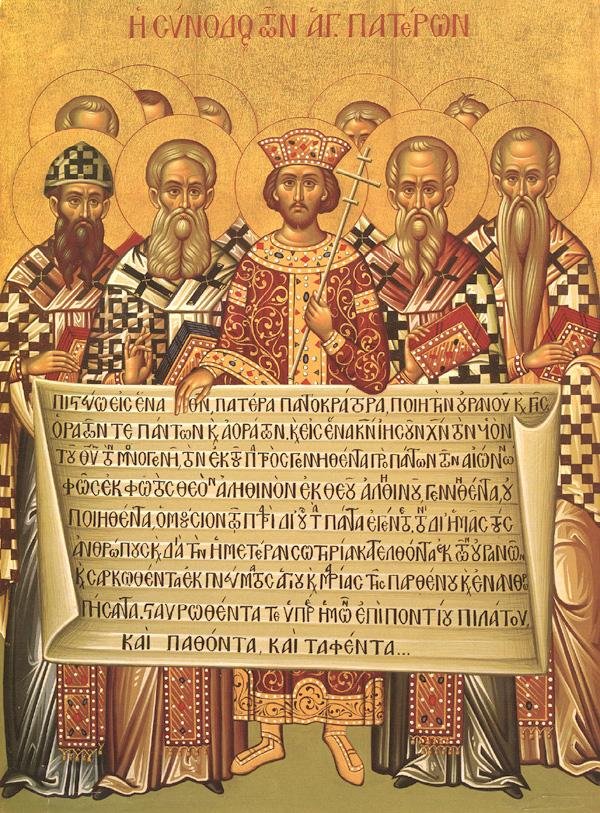
Icon depicting the Council of Nicaea. The emperor Constantine and the bishops of the Church hold the Nicene Creed.
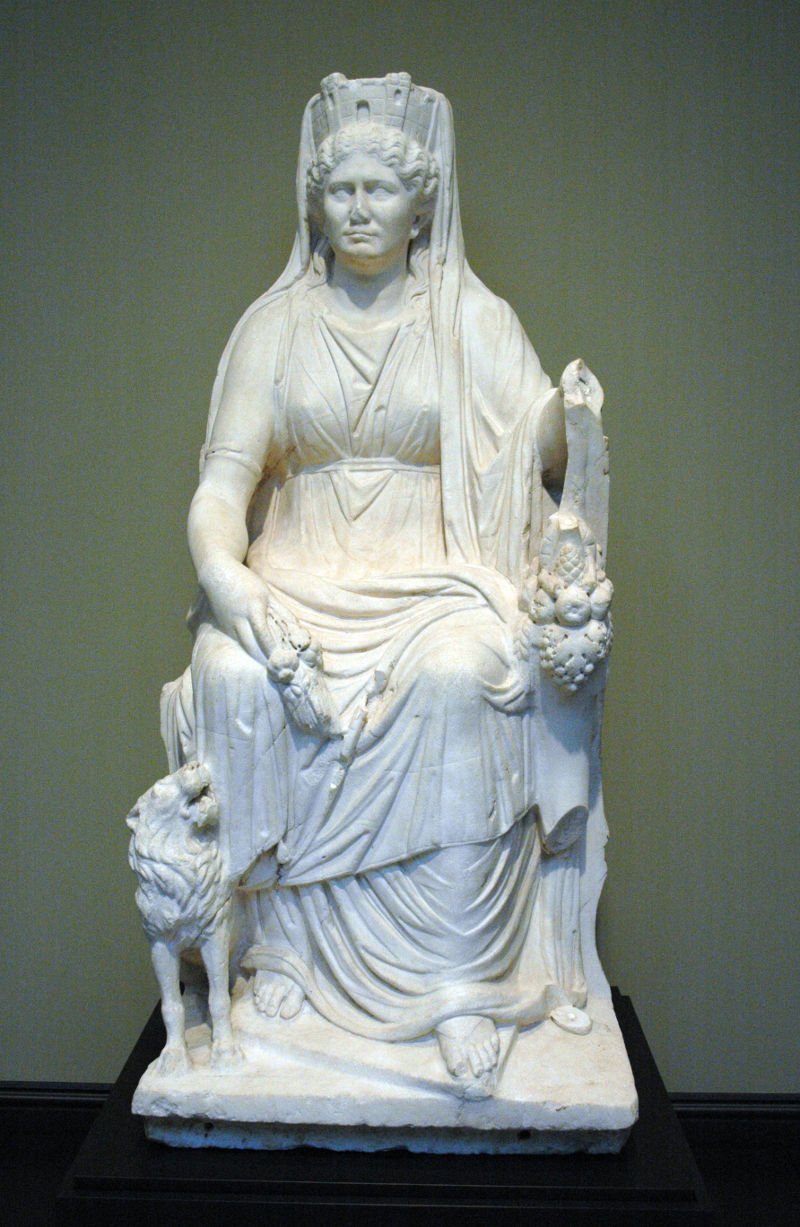
Cybele enthroned, with lion, cornucopia and Mural crown. Roman marble, c. 50 CE. Getty Museum (Wikipedia).
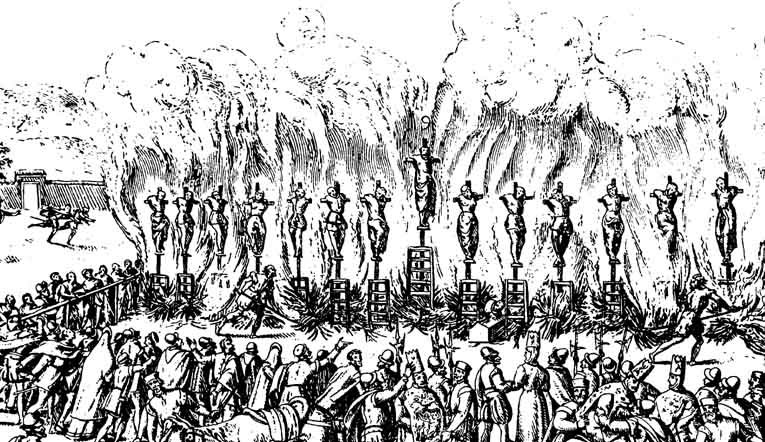
The Spanish Inquisition is the subject of elaborate Protestant and anti-Catholic exaggeration and invention, resulting in a mythos with almost no basis in fact.

It’s true, the Bible was often chained — to prevent vagrants from walking off with it (Wikimedia).
Many Protestants — even those who deny such a broad claim as that “the Catholic Church was completely apostate from the truth of Christ” — readily accept many of these suggestions or their implications. In future posts, I will examine each of these claims and indicate their logical fallacy and lack of historical foundation.

